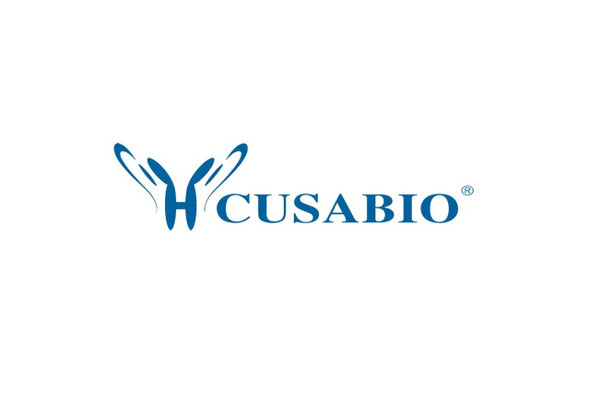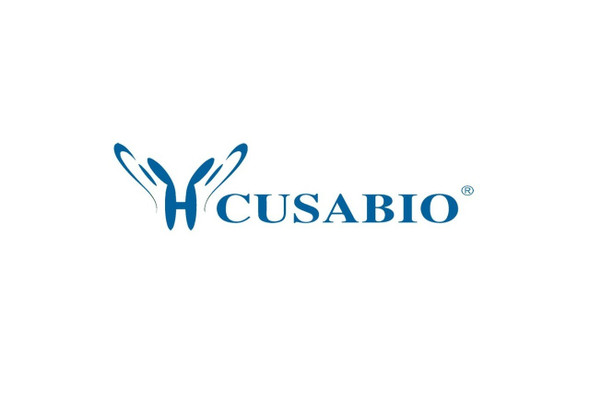Cusabio Human Recombinants
Recombinant Human Histone acetyltransferase KAT7 (KAT7), partial | CSB-RP038644h
- SKU:
- CSB-RP038644h
- Availability:
- 13 - 23 Working Days
Description
Recombinant Human Histone acetyltransferase KAT7 (KAT7), partial | CSB-RP038644h | Cusabio
Alternative Name(s): Histone acetyltransferase binding to OR;C1Lysine acetyltransferase 7MOZ, YBF2/SAS3, SAS2 and TIP60 protein 2 ;MYST-2
Gene Names: KAT7
Research Areas: Transcription
Organism: Homo sapiens (Human)
AA Sequence: MPRRKRNAGSSSDGTEDSDFSTDLEHTDSSESDGTSRRSARVTRSSARLSQSSQDSSPVRNLQSFGTEEPAYSTRRVTRSQQQPTPVTPKKYPLRQTRSSGSETEQVVDFSDRETKNTADHDESPPRTPTGNAPSSESDIDISSPNVSHDESIAKDMSLKDSGSDLSHRPKRRRFHESYNFNMKCPTPGCNSLGHLTGKHERHFSISGCPLYHN
Source: E.coli
Tag Info: N-terminal GST-tagged
Expression Region: 1-214aa
Sequence Info: Partial
MW: 50.8 kDa
Purity: Greater than 90% as determined by SDS-PAGE.
Relevance: Component of the HBO1 complex which has a histone H4-specific acetyltransferase activity, a reduced activity toward histone H3 and is responsible for the bulk of histone H4 acetylation in vivo. Through chromatin acetylation it may regulate DNA replication and act as a coactivator of TP53-dependent transcription. Specifically represses AR-mediated transcription.
Reference: DNA sequence of human chromosome 17 and analysis of rearrangement in the human lineage.Zody M.C., Garber M., Adams D.J., Sharpe T., Harrow J., Lupski J.R., Nicholson C., Searle S.M., Wilming L., Young S.K., Abouelleil A., Allen N.R., Bi W., Bloom T., Borowsky M.L., Bugalter B.E., Butler J., Chang J.L. , Chen C.-K., Cook A., Corum B., Cuomo C.A., de Jong P.J., DeCaprio D., Dewar K., FitzGerald M., Gilbert J., Gibson R., Gnerre S., Goldstein S., Grafham D.V., Grocock R., Hafez N., Hagopian D.S., Hart E., Norman C.H., Humphray S., Jaffe D.B., Jones M., Kamal M., Khodiyar V.K., LaButti K., Laird G., Lehoczky J., Liu X., Lokyitsang T., Loveland J., Lui A., Macdonald P., Major J.E., Matthews L., Mauceli E., McCarroll S.A., Mihalev A.H., Mudge J., Nguyen C., Nicol R., O'Leary S.B., Osoegawa K., Schwartz D.C., Shaw-Smith C., Stankiewicz P., Steward C., Swarbreck D., Venkataraman V., Whittaker C.A., Yang X., Zimmer A.R., Bradley A., Hubbard T., Birren B.W., Rogers J., Lander E.S., Nusbaum C.Nature 440:1045-1049(2006)
Storage: The shelf life is related to many factors, storage state, buffer ingredients, storage temperature and the stability of the protein itself. Generally, the shelf life of liquid form is 6 months at -20?/-80?. The shelf life of lyophilized form is 12 months at -20?/-80?.
Notes: Repeated freezing and thawing is not recommended. Store working aliquots at 4? for up to one week.
Function: Component of the HBO1 complex which has a histone H4-specific acetyltransferase activity, a reduced activity toward histone H3 and is responsible for the bulk of histone H4 acetylation in vivo. Involved in H3K14 (histone H3 lysine 14) acetylation and cell proliferation (By similarity). Through chromatin acetylation it may regulate DNA replication and act as a coactivator of TP53-dependent transcription. Acts as a coactivator of the licensing factor CDT1
Involvement in disease:
Subcellular Location: Nucleus, nucleoplasm, Cytoplasm, cytosol, Nucleus
Protein Families: MYST (SAS/MOZ) family
Tissue Specificity: Ubiquitously expressed, with highest levels in testis.
Paythway:
Form: Liquid or Lyophilized powder
Buffer: If the delivery form is liquid, the default storage buffer is Tris/PBS-based buffer, 5%-50% glycerol. If the delivery form is lyophilized powder, the buffer before lyophilization is Tris/PBS-based buffer, 6% Trehalose, pH 8.0.
Reconstitution: We recommend that this vial be briefly centrifuged prior to opening to bring the contents to the bottom. Please reconstitute protein in deionized sterile water to a concentration of 0.1-1.0 mg/mL.We recommend to add 5-50% of glycerol (final concentration) and aliquot for long-term storage at -20?/-80?. Our default final concentration of glycerol is 50%. Customers could use it as reference.
Uniprot ID: O95251
HGNC Database Link: HGNC
UniGene Database Link: UniGene
KEGG Database Link: KEGG
STRING Database Link: STRING
OMIM Database Link: OMIM









